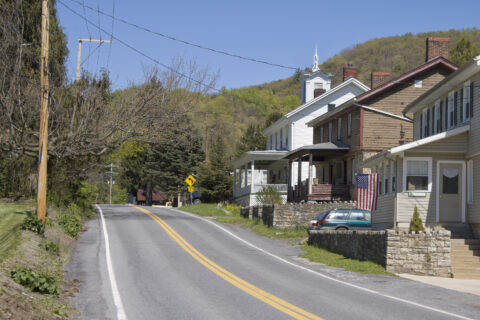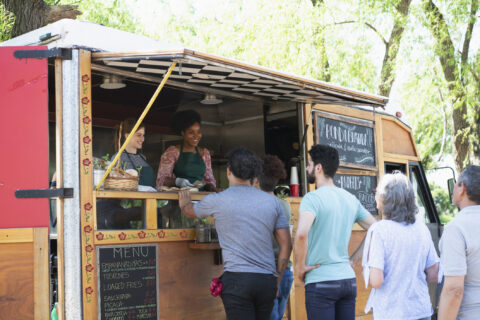With the passage of the Bipartisan Infrastructure Law (BIL) and the American Rescue Plan Act (ARPA) that provided State and Local Fiscal Recovery Fund (SLFRF) dollars cities, towns, and villages across the country have for the first-time resources to take on some of their largest problems – problems that in many places have persisted for generations. Tackling city infrastructure issues with these funds is one way to make large-scale investments in local communities that will live on beyond the funds themselves. But investment in the traditional infrastructure without thinking of the human capital (i.e., those who will build the roads, bridges, and community centers) and the workforce pipeline (i.e., youth and young adults) cannot be overlooked. These two large federal funding sources can support one another and augment traditional workforce funds made possible through the Workforce Innovation and Opportunities Act (WIOA).
This collective work of investing in the development of human capital beyond a high school credential is critical to advancing the upward economic mobility of residents. Economic mobility is a person’s movement up or down the economic ladder over a lifetime. Municipalities across the country are engaging with employers, Workforce Investment Boards (WIB), and other partners to develop education and skill training to meet the moment.
Seeing the opportunity for infrastructure improvement and connecting with workforce development in the present is important but looking longer term beyond the now is what will set communities up for greater success. In particular, the workforce we will need moving forward long after BIL and SLFRF dollars are footnotes in history. All municipalities have an opportunity with SLFRF dollars to rethink employment and training activities that are happening within their jurisdictions by understanding where their WIOA dollars are going and supporting efforts that will equitably lead to more individuals with at least industry-recognized credentials from high-demand sectors.
To advance workforce development for the long-term cities should consider investing in support for youth including:
Building Savings and Boosting Expectations
One strategy that has been growing in cities to advance education beyond high school is the creation of Children’s Savings Accounts (CSAs). CSAs are long-term savings or investment accounts that provide incentives to help children, especially low-income children, build dedicated savings for postsecondary education. These accounts often start at birth or when a child enters kindergarten allowing them to grow via financial deposits over time and allowing for years of conversations about what the child will do with the funds after high school. CSAs have a powerful impact on the educational expectations of the youth, their caregivers, and the collective community that comes together to support the youth’s educational savings over time. Cities across the country have connected their CSAs with other initiatives from guaranteed income to postsecondary support programs. CSA programs can also include grade-appropriate financial education lessons for the children who oftentimes teach their caregivers as well.
Raising Awareness of Employment Opportunities
The City of Roanoke, VA as a member of the Equitable Economic Mobility Initiative cohort, has recognized the need to think about the pipeline of workers and that youth are an important part of that pipeline. The city has been working to build awareness of high-tech, high-demand jobs through an annual career fair for youth. Roanoke is making investments to ensure employers across the region are providing interactive displays of their work that will catch the attention of youth, ensuring all youth from Roanoke can participate, and educating middle and high school guidance counselors about workforce development programs that are supported in the region that will lead to stronger career outcomes and advance economic mobility in the region.
Growing Apprenticeships for Youth
The City of Denver leveraged its position as an employer to provide an onramp for youth to better understand what a career in local government could look like. The city in partnership with CareerWise Colorado offers high school seniors a three-year apprenticeship. The youth apprentices split time between their traditional high school classroom and the workplace while receiving a wage. Upon high school graduation, the youth in the program are expected to take classes from local colleges or universities to further their knowledge, abilities, and career. The youth apprentices work across a range of city agencies to explore a variety of careers in professional settings. The apprenticeship offers youth experience working in local government and if they want can be leveraged into a career that offers benefits, a career pathway, and a living wage.
Creating programs and expanding partnerships for youth that live well beyond BIL and ARPA is important to expanding the impact of a long-term equitable economic recovery. The collective efforts to help all families save for post-high school education through CSAs, help youth understand job opportunities in their area, and the education they need to secure those jobs, and create onramps for youth to explore municipal employment are important building blocks to create pathways that increase the upward economic mobility of future generations.
This blog is part of a series that spotlights the efforts of eight cities participating in NLC’s Equitable Economic Mobility Initiative (EEMI). Subsequent blogs will highlight actions cities can take to advance equitable economic mobility for residents by leveraging federal funding, aligning community partners, and developing sustainable programming that changes the trajectory for many vulnerable families.
Connect with Cities
Sign up for the Economic Mobility Peer Network to connect with other cities and hear from leading experts on topics designed to help cities boost residents’ economic mobility using strategies grounded in equity.








